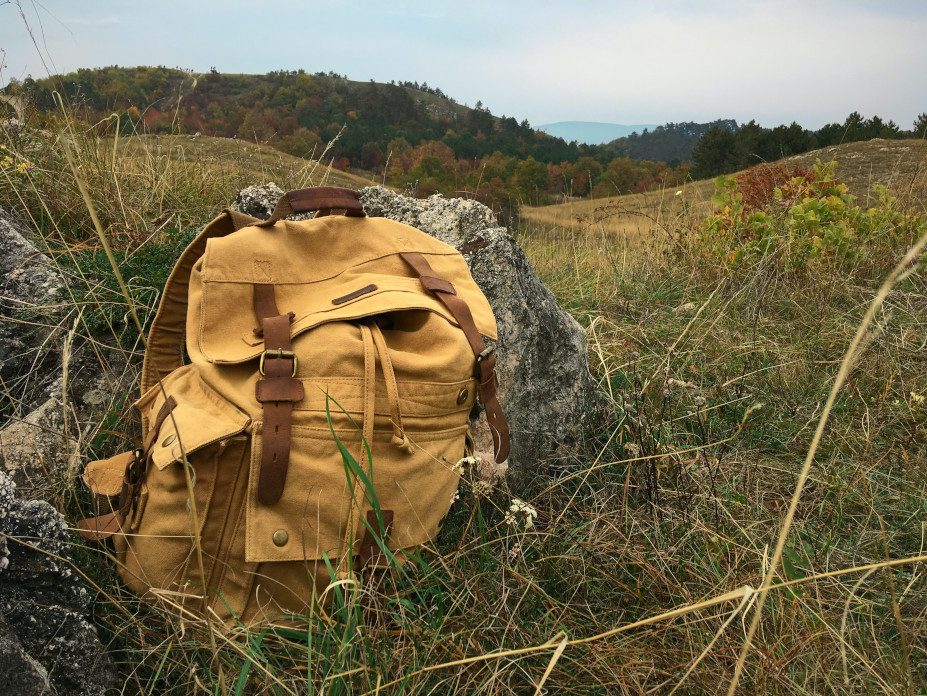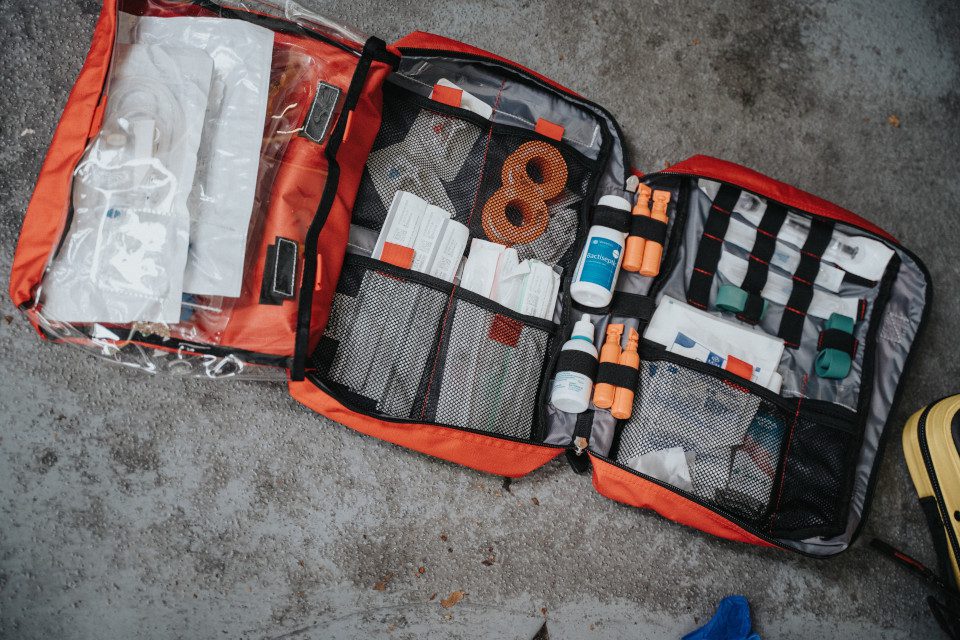Bugout bags are a key ingredient in being fully prepared for a disaster and its aftermath.
If you want to be able to evacuate your home quickly following a natural disaster such as an earthquake, hurricane, or another natural catastrophe, then you absolutely need a bugout bag (or multiple bags).

These bugout bags aren’t just for surviving a natural disaster. There are a number of reasons you might need to grab the most essential items and leave your home immediately. Think of government or societal shutdown, or even another pandemic that really gets out of control.
The choice is yours; you can stay put in your house and wait it out, or take the short trip into the wilderness and bugout. In either case, having a pre-packed bugout bag is a must.
This article is going to cover some of the most important items you should consider when packing a bugout bag so that you can grab and go when time is of the essence.
We’ll focus on what just one person might need to include in their bugout bag. We’ll follow up with an article covering family bugout bag situations as well.
What is a Bugout Bag?
A bugout bag is a survival kit that includes items specifically designed to help an individual escape a disaster or emergency. You can find bugout bags of varying cost and complexity, but they all have one thing in common: they’re designed to help people escape from disasters or military raids effortlessly and quickly.
These bags are usually smaller and lighter than traditional camping kits, so they can be packed away easily when not in use. They often feature water-resistance features as well as storage compartments for miscellaneous essentials like flashlights, first-aid supplies, candles, matches, pest repellent, fishing lines and hooks, wire cutters, and more.
“Ok, so what should I put in mine?”

What to Include:
The Bag Itself:
Since this is where your life-sustaining supplies are going to be stored and carried, there are things to consider:
-
- It needs to be water-proof. The last thing you need is for your spare dry socks to get soaking wet. Imagine stopping for the evening to rest and all you want to do is put on your warm comfortable socks, only to find out they are wet and colder than what you wore all day.
-
- If possible, make sure your bag has a comfortable waist strap.
-
- The shoulder straps should be padded and comfortable.
-
- The zippers need to be strong and functional.
-
- You need the seams to be secure and quality so that you don’t end up with any holes or tears.
-
- In order to keep a low profile, consider dark-colored bags. You don’t have to go full camouflage, but you also don’t want to stand out. Black, dark green, and brown colors are good choices.
-
- In the end, try to ensure you’re not carrying more than 20% of your body weight. Make it manageable. Don’t break your back while bugging out.
That covers the basics of the bag itself. Now let’s review key items to put in it.
Clothing
These items are important for your comfort and sanity. It’s bad enough you had to bug out on a Tuesday at 3 am.
The last thing you want is not having a change of clothing if you were trekking through mud all day, or it was hot and you’re covered in layers of dry sweat.
Make sure to have two of each of the following items in your bugout bag.
-
- Socks
*Note: if you don’t change your socks frequently, there are certain health hazards you become prone to. Learn more about “trench foot”.
-
- Underwear (nothing feels better than fresh clean underwear)
-
- T-shirts (good to have a short-sleeved and long-sleeved option)
-
- Pants (depending on the season, you may want to consider shorts and pants – one each)
“So my direct clothing is covered, what’s next?”
Weather Protection Items
Rain or shine, extreme weather can also make things harder for you if you’re not prepared.
Your bugout bag needs the following weather-protecting accessories.
-
- Poncho – Very helpful to keep you dry
-
- Tarp – This can double as your shelter and keep important things covered
-
- Hat – If it’s hot and you sweat a lot, sunscreen may not last very long. A hat definitely keeps the sun out of your face, and off of your head.
“Okay, I can stay weather ready. How about food and water?”
Food and Water
You’re going to need to keep your energy up and your body nourished to survive. The human body can technically go without food for a while, but you don’t really want to feel hungry and uncomfortable all the time. Water is a must.
-
- 3 days of MREs – These are affordable and packed with enough calories to keep you alive and well.
-
- Energy Bars – It doesn’t matter what flavor or brand, but these carry the protein you’ll need to keep going
-
- Water Purifier – You can purchase these small devices to carry with you if you don’t want to carry heavy water around. These will filter out bacteria and contaminants from most water sources.
-
- Collapsable Cup – These don’t take up much space and they’re reusable
-
- Disposable or reusable cutlery – MREs tend to come with utensils, but if you go fishing you don’t need to eat your catch with your hands
“Alight, I think I know how to carry food. What if I get sick or hurt?:
Medical
If you’re on your own hiking to your next destination, if you get hurt you’re going to be stuck. If you get sick, you’re going to be stuck too or slowed down.

-
- First-Aid Kit – Make sure it has bandages, a tourniquet, antibiotic ointment, medical tape, etc.
-
- Moleskin – if your feet get blisters, moleskin will save you. Walking or doing anything with blisters on your feet is painful and a severe inconvenience.
-
- Chapstick – It doesn’t have to be cold out to need chapstick. It can be windy and dry, and chapped lips are just uncomfortable.
-
- Sunscreen – Hats can’t protect your entire body from getting sunburned.
-
- Antihistamine – helpful for allergies and minor allergic reactions such as bee stings.
-
- EpiPen – Not everyone knows what they’re allergic to until it happens. Your throat will swell up and you won’t be able to breathe. EpiPens (or epinephrine) can save your life when you least expect it.
-
- Personal medications – A good number of people in the US take medications prescribed by a licensed physician. If you suddenly stop taking certain medications, it can be life-threatening or just miserable.
“So, I’m prepared to take care of my health, but what else are we missing?”
Tools
The following items are very helpful to get you to your next destination. Each serves a specific person, but not everyone is going to need the same tools to survive.
-
- Wilderness Knife – You’re bound to need to cut something. Whether it’s branches for firewood or you need a quick slice through rope, you can’t go wrong with a wilderness knife.
-
- Leatherman – These are handy to have at all times, not just for disaster preparedness. They come with screwdrivers, tiny scissors, and occasionally a mini fork.
-
- Firestarter or Water-Proof Matches – You might need to stay warm or cook a fire for food. Having the ability to start a fire is key to survival.
-
- Compass – It’s helpful to know which direction you’re going in and not traveling in circles.
-
- Help Whistle – if you get injured and/or can’t move, a help whistle may be the only way someone hears you.
-
- Glow Sticks – Helpful to see in the dark and they can last up to 4 hours.
-
- Flashlight – for use if you need something brighter than glow sticks, especially white light.
-
- Gloves – These protect your hands while climbing or navigating through thorny brushes.
-
- Mini Fishing Kit – If you forgot to pack your MREs or you’ve run out of food, fishing could be your next reliable option.
-
- Solar-Powered or Crank Emergency Radio – During a SHTF situation, you need to know what else the world is going through. Should you keep going or can you safely return home?
“Great tips. Anything else I should consider?”
Miscellaneous
This last group of items are options, but very helpful if you have room in your bugout bag.
-
- Cash (small bills) – You never know if you’re going to need money, but when you do it hurts when you don’t have it.
-
- Emergency Preparedness Binder on a USB drive – This is the most important information in your life. It can really help start your life over if you have to.
-
- Deck of Cards – This is for boredom and to help pass the time if you’re stuck someplace.
-
- Pepper Spray or Firearm – Having a reliable tool to protect you from dangerous wildlife or other people is something you can’t ignore.
-
- Hand Warmers – Cold hands are painful hands. You want to prevent frostbite as well.
Bugout Bag Conclusion
Again, not everyone needs the same things in their bugout bag. Some people find traveling very light to be the quickest and most efficient, but others might just need more items to survive.
Make a note to inventory your bugout bag every 6 months and change out food that’s expected to expire before your next planned inventory.
We would love to hear your ideas about what should or should NOT be included in a bugout bag. Comment below and let us know.
As always, stay prepared friends!



